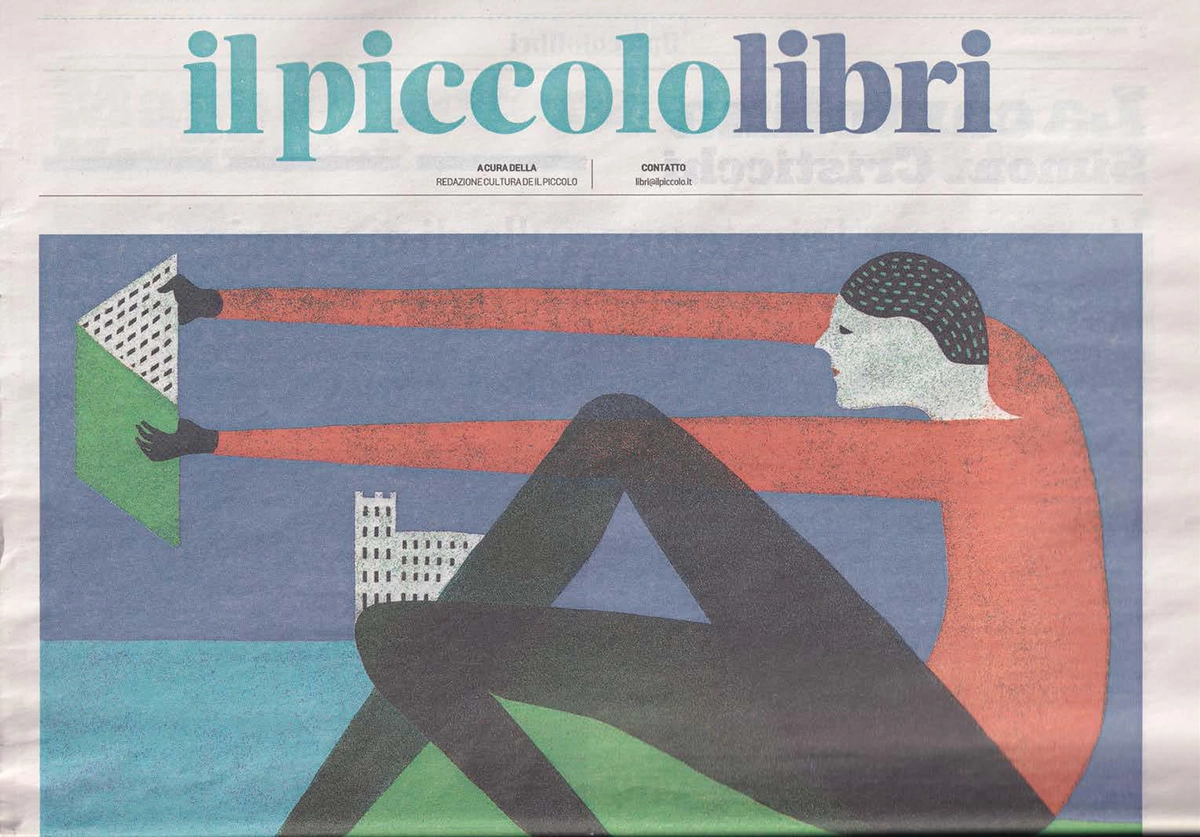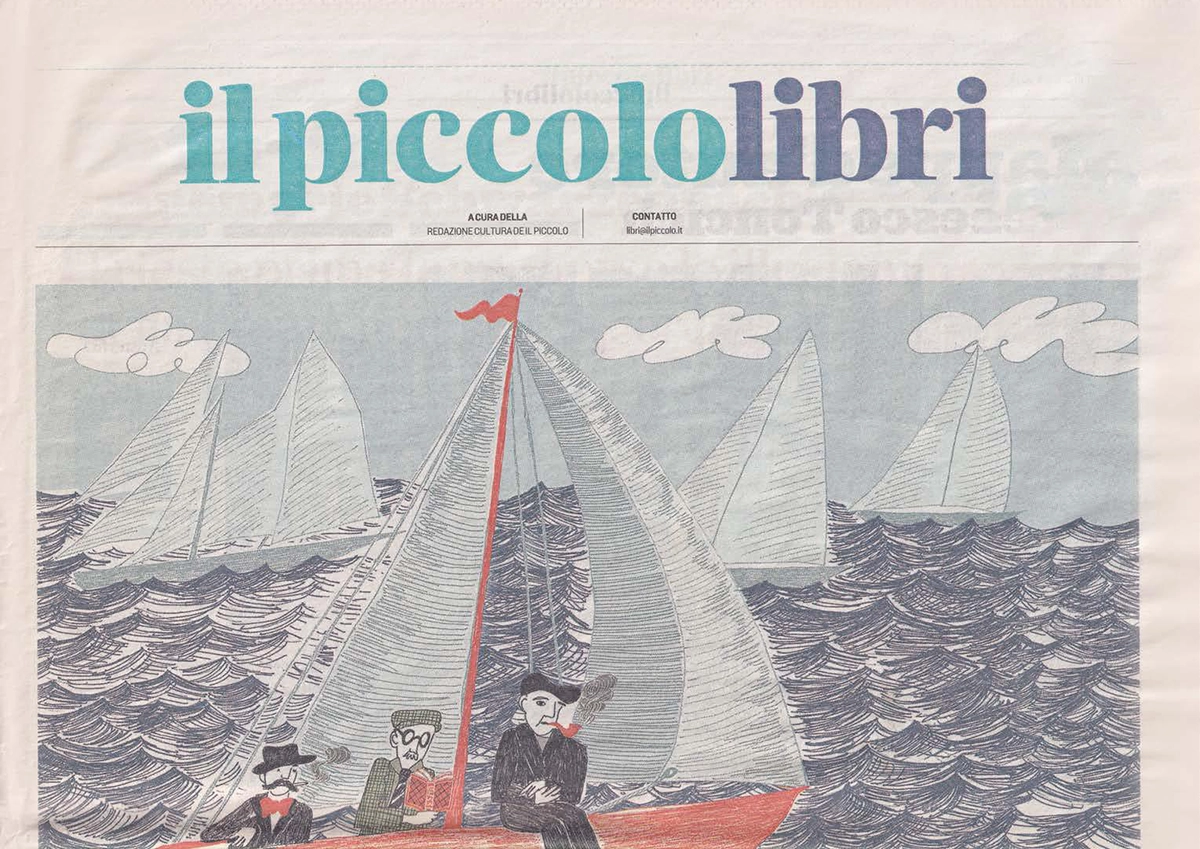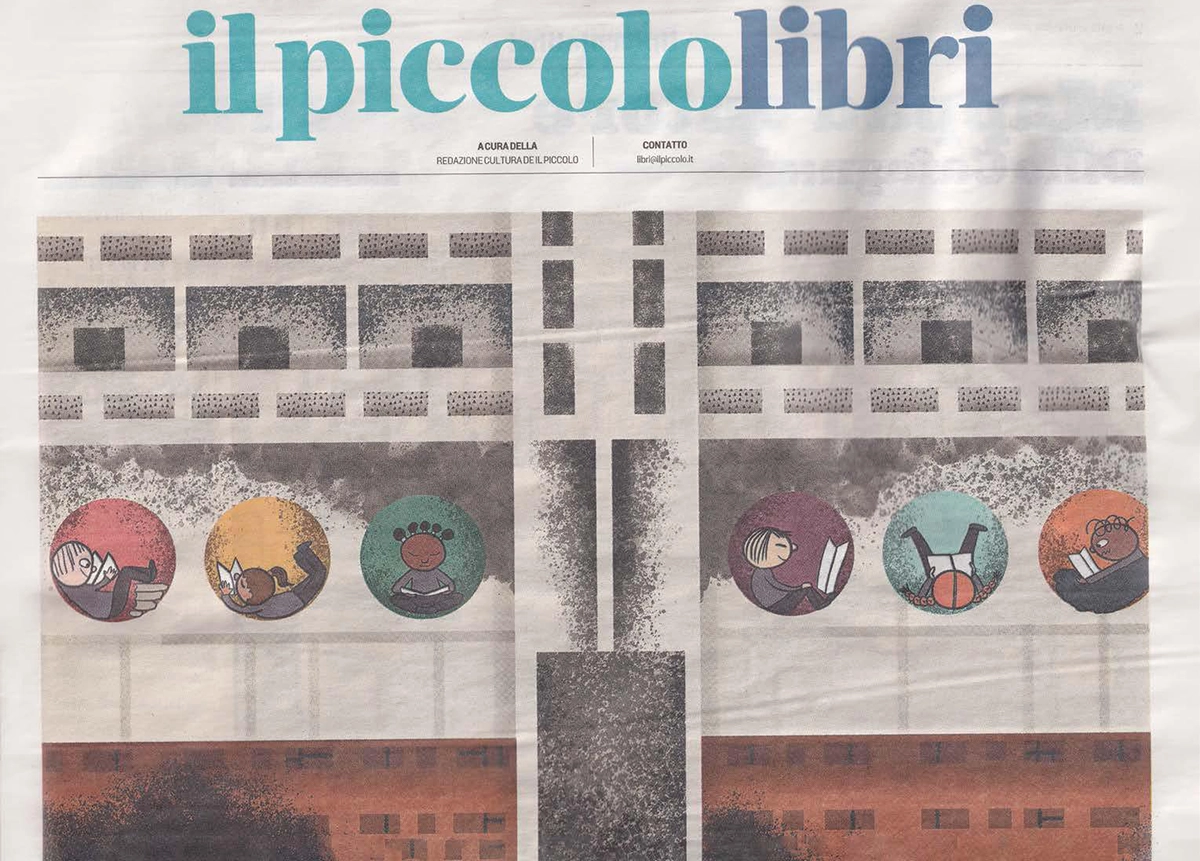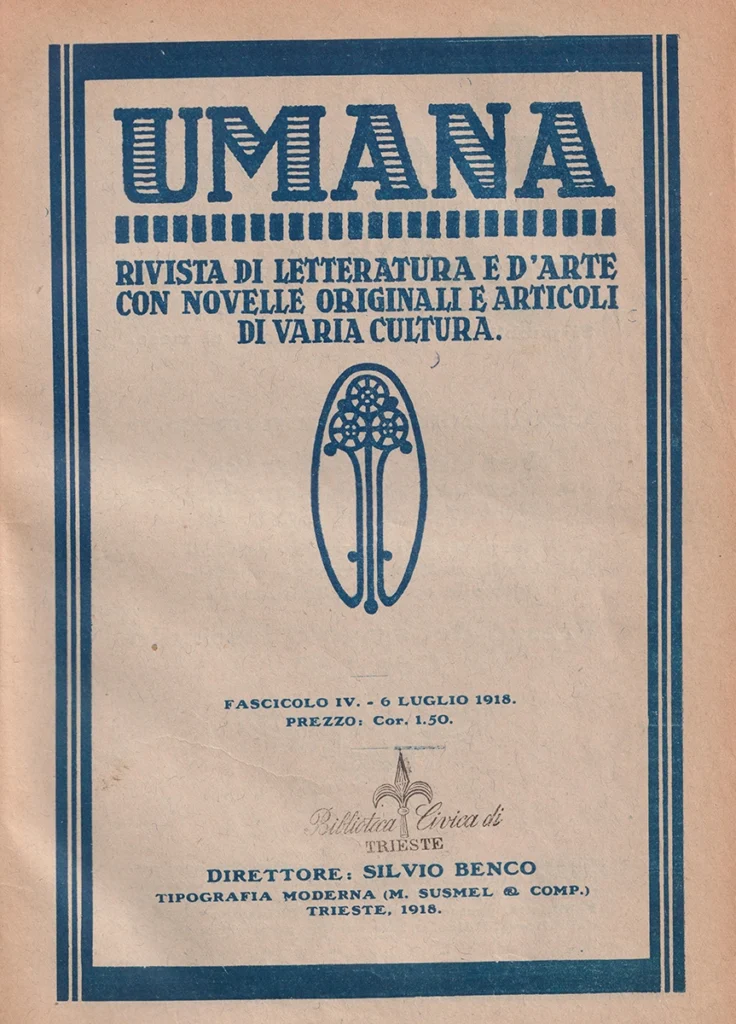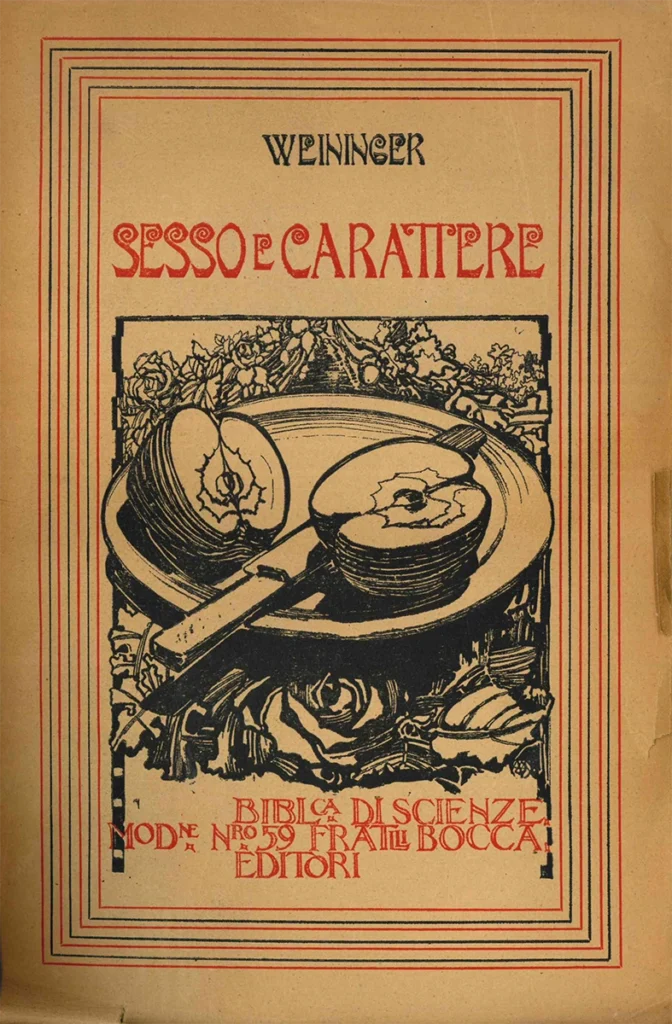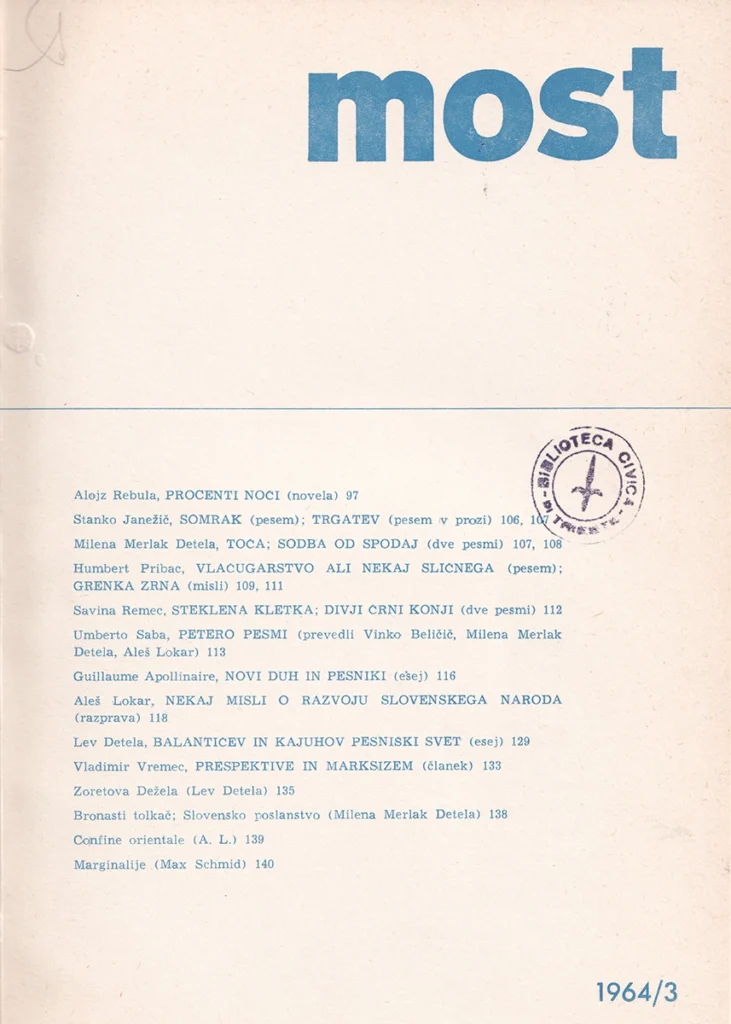
Does “Triestine literature” really exist?
This question can generally be traced back to an 1930 article on Stuparich which the critic Pietro Pancrazi published in the “Corriere della Sera”, outlining some peculiar traits of writers from Trieste such as: “problematism, psychological interest, moral anxiety, and expressive labour”. Debated countless times, the question is intertwined with reflections on the national character of the city, especially during the most intense periods of contention (Gianfranco Contini, Carlo Bo).
The triestine critic Bruno Maier adds to Pancrazi’s characters with “the sense of concreteness, realism, and seriousness” and above all “the anti-literariness”. Later, other voices (Claudio Magris, Elvio Guagnini) tend to trace back these findings only to certain writers active between the end of the 19th century and the 1930s, opposing the tendency to make too much of it and render the paradigm a cliché.
Academic criticism and militant criticism
The question of a “literary triestinity” not only concerns university criticism, but also that expressed in the pages of newspapers and which, in Trieste, may be termed “militant”. Silvio Benco, the most authoritative and longlived of the Trieste journalists of the first half of the 20th century, opposed the idea of isolating “Triestine literature” because he wanted it to be an integral part of the Italian national one, the expression of an indisputable bond.
Benco as a critic intercepts all the most significant moments of literary Trieste at the beginning of the century. In 1908 he recounted the first Futurist evening; in 1919 he signed the introduction to Saba’s first Poesie and, in 1921, the first Italian review of Joyce’s Ulysses. In 1923, again, he was the first to review Svevo’s La coscienza di Zeno, a man he had met years earlier at “L’Indipendente”
One city, one literature, one language?
Very rarely does the debate extend to what today appears to us to be one of the distinctive elements of literature in Trieste, its multilingualism. “No one, not even the clandestine scholars who read Kafka and Freud, realize that Srečko Kosovel lived on the Trieste Karst” (Ara, Magris, Trieste. Un’identità di frontiera, 1982). “Slovenian writers from Trieste” wrote Miran Košuta in 1992 in an article dedicated to the topic of translations, are “as if they didn’t exist” (Tamquam non essent).
Despite the link with the great Mitteleuropa tradition and with the German and Austrian literature of Trieste which, well in advance of other Italian centres, was reading and discussing Nietzsche, Hebbel, Weininger, Strindberg, Kafka and Freud, the Germanspeaking literature of Trieste also received little attention from critics and translators and figures such as Daubler and Baumbach disappeared from the city’s cultural consciousness for a long time.
The Trieste of Magris and much more
The situation has changed in more recent times, when attention focuses on intercultural dynamics. The Silvio Benco of our times is Claudio Magris. A Germanist, during his long career as a critic he conducted systematic research on literature in Trieste. A refined collaborator of the “Corriere della Sera” and other newspapers, creator of numerous literary forewords and postscripts, he has written about authors such as Pressburger, Roveredo and Prenz with whom he was close friends.
Historic magazines such as “La Battana” of Fiume and the Slovenian “Most” of Trieste have favoured contact between the area’s various elements, while the great authors neglected in the past – first and foremost Joyce – are now the focus of thriving and long-lived initiatives such as the “Joyce School.” Through the University of Trieste an “Archive of Writers and Regional Culture” has been created, and Walter Chiereghin and Claudio Martelli have edited the Dictionary of Authors of Trieste, Isontino, Istria and Dalmatia. In addition, the local newspaper “Il Piccolo” brings to the forefront the city’s cultural initiatives, also with special inserts.
